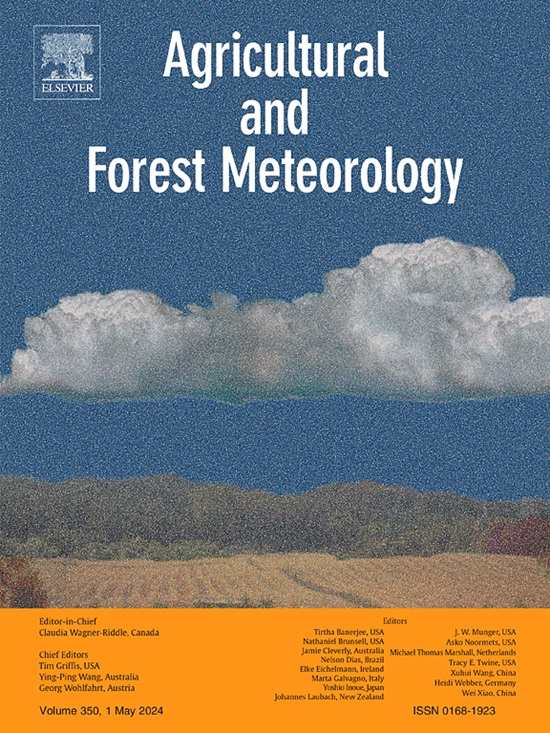Invasive tree species benefit from ecohydrological niche segregation and deeper soil water uptake in a Mediterranean riparian forest
IF 5.6
1区 农林科学
Q1 AGRONOMY
引用次数: 0
Abstract
Aridification due to climate change and water table lowering due to human management are intensifying the environmental filter of summer aridity for Mediterranean riparian forests. This may represent an opportunity for the entry of non-native (NNT) species which might be pre-adapted to these new conditions, thus favoring their invasive potential. Differences in water uptake depth by coexisting native (NT) and NNT tree species could be one of the reasons why some of the latter species might become successful invaders in riparian ecosystems. To test whether spatial ecohydrological niche segregation occurs during dry summers, we analyzed stable water isotopes from different sources in a riparian ecosystem of central Spain. Xylem water δ18O was analyzed in 6 NT and 6 NNT (2 of them invasive) coexisting tree species. We used Bayesian isotope mixing models to estimate the proportion of water from different depths used by trees. We also tested the relationship between the δ18O from xylem water and leaf δ13C to test if species with deeper access to water have lower intrinsic water use efficiency (iWUE). We found no segregation between NT and NNT species in water uptake depth, but a species-specific vertical partitioning of water resources, with both invasive species extracting more water from the deepest soil layers. NNT species had higher leaf δ13C. A negative relationship between xylem water δ18O and leaf δ13C was found at interspecific level, indicating that species with greater access to deep water are also those bearing higher iWUE. Our results indicate a pronounced niche partitioning promoting species coexistence. The ability of invasive species to tap into deeper water layers combined with higher iWUE led to a competition-avoidance strategy together with a water stress-avoidance strategy. Deeper water uptake and greater iWUE could be important driving the success of tree species in Mediterranean floodplains under drier conditions.
求助全文
约1分钟内获得全文
求助全文
来源期刊
CiteScore
10.30
自引率
9.70%
发文量
415
审稿时长
69 days
期刊介绍:
Agricultural and Forest Meteorology is an international journal for the publication of original articles and reviews on the inter-relationship between meteorology, agriculture, forestry, and natural ecosystems. Emphasis is on basic and applied scientific research relevant to practical problems in the field of plant and soil sciences, ecology and biogeochemistry as affected by weather as well as climate variability and change. Theoretical models should be tested against experimental data. Articles must appeal to an international audience. Special issues devoted to single topics are also published.
Typical topics include canopy micrometeorology (e.g. canopy radiation transfer, turbulence near the ground, evapotranspiration, energy balance, fluxes of trace gases), micrometeorological instrumentation (e.g., sensors for trace gases, flux measurement instruments, radiation measurement techniques), aerobiology (e.g. the dispersion of pollen, spores, insects and pesticides), biometeorology (e.g. the effect of weather and climate on plant distribution, crop yield, water-use efficiency, and plant phenology), forest-fire/weather interactions, and feedbacks from vegetation to weather and the climate system.

 求助内容:
求助内容: 应助结果提醒方式:
应助结果提醒方式:


